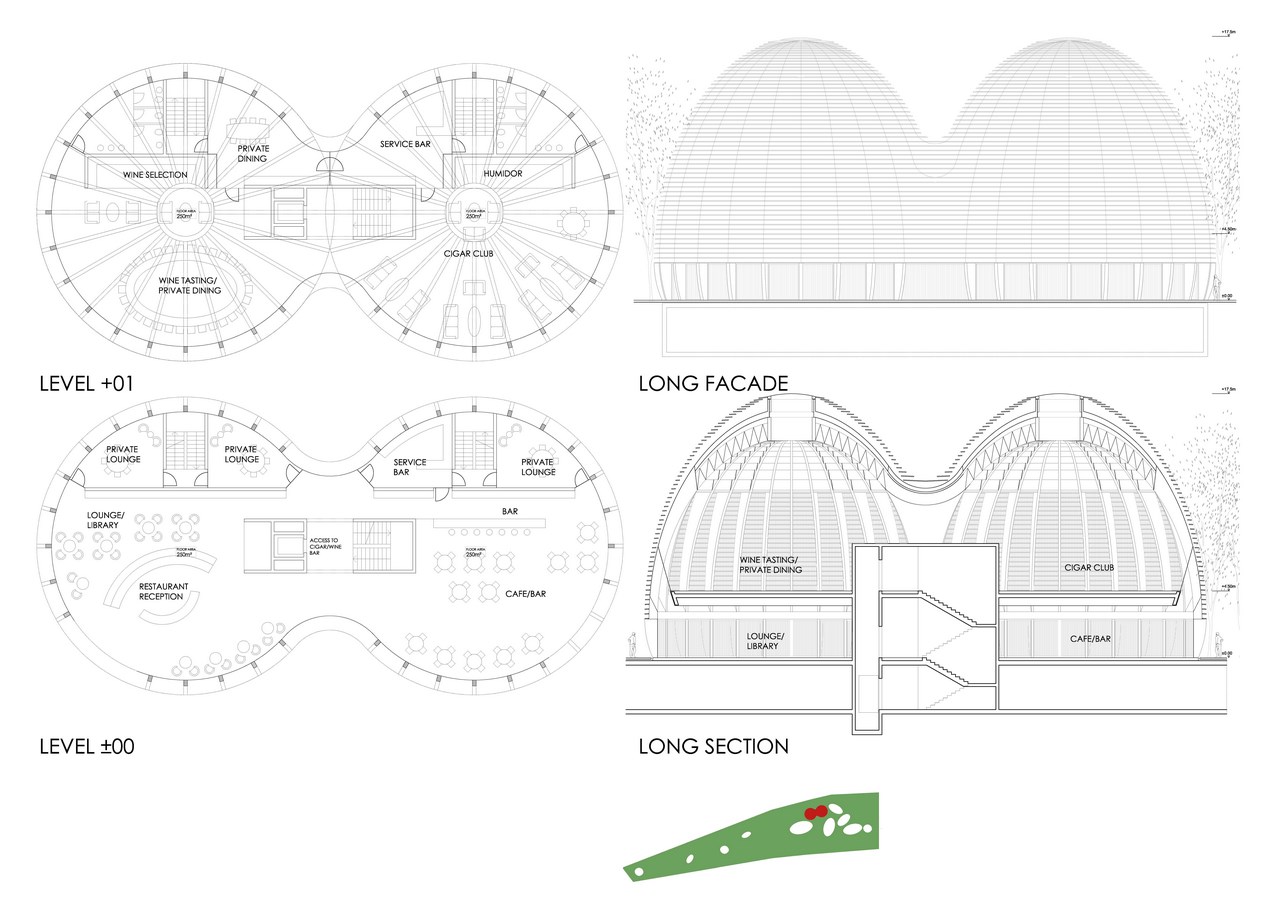CLUBHOUSE FOR LAN HAI QUANZHOU WATERCITY
New beginnings,
Cell like structures representative of the birth of a new city, The cells of a new organism.
Project Description
Urban/Landscape Considerations

The proposed urban design of Lan Hai Quanzhou Watercity is on a grand scale with the overall masterplan objectives being a rich, varied and ecologically aware sustainable city; a city connected with its waterways and open green spaces. In harmony with these ambitions, our proposal for the city’s Clubhouse aims to create a scheme with a civic pride that emphasizes these city’s qualities and that is representative of the city in microcosm.


Concept
We have set the Clubhouse immersed in a natural parkland and developed a design that sets the perception of the natural landscape as prime. The seducent geometry of the built form of the Clubhouse finds its natural continuity and its sense of place in the shaping of this new parkland and in this way, we intend the project not as a building or a system but as an organism that works with distinct elements that feed each other. An important principle of the design is to create both a sense of community and a sense of intimacy with a series of elegant, inviting and intriguing spaces.

The project comprises a series elliptically domed forms. Their natural organic forms have a calm presence in the landscape and will be a striking contrast with the urbanity of the city. While the volumes differ in scale and height, each is derived from the same elliptical plan and section; all from one cell.
The main building is made up of five elliptical volumes, along with the rotunda pool and the connecting spaces. Spread out along with park are a further two elliptical pavilions and two open air round pavilions.

Social ambitions:
An urban condenser.
The fluidity of the economic and social lives of the city merge and exchange of the social and economic life of the city becoming blurred become a centre of public life holding the activities of public life; restaurants, bars, café, entertainment and spa where visitors come to relax, enjoy a meal, try a new wine and also do business.

Spatial ambitions:
Commanding views
Accessibility, one floor
Warmth of the timber volumes, timber flooring,
The engagement with the landscape is an integral part of the experience of the scheme Circulation, movement, flows
Private, semi private
Open views to waterways, lush green park Sense of luxury immersed in Nature Respect for the environment
Didactic pathways and routes to allow the visitor engage with their environment Human scale vaulted spaces thematic gardens, botanical zones, differing vegetation
raised land to create small hills, reducing traffic noise pollution and separating the parking area from the green park.
Quality of light and shade in these spaces Varying heights, light quality
Diffuse light
Brise soleil of the timber cladding
The internal circulation is organised so that the sight lines lead to a courtyard, garden or outside the building.


Architecture is an ethical matter before being an aesthetical one.
Our engagement towards the sustainability of architecture is to solve matters related to architecture itself (orientation, insulation factor, excavated volumes) to create microclimate areas, long-term temperature range of the shell of the building using efficient ventilated double walls, control of natural light and ventilation, use of new technologies for heating/cooling, recycling of sources of energy such as waste water and exhaust air, eco friendly mechanical systems.
The preference of natural and local materials becomes more and more an ethical engagement for ‘grey energy saving’ and the psychological well-being of the users.

DAVIDE MACULLO
Davide Macullo (b. Giornico, CH, 1965) lives and works in Lugano, Switzerland. Studied art, architecture and interior design. For 20 years (1990-2010) he was project architect in the atelier of Mario Botta with responsibility for over 200 international projects worldwide. He opened his own atelier in 2000.
The ethos of the studio is one of ‘drawing from context’ and the various contributions promote a dialogue between the specificity of the project and the universality of the contexts. His work has been published and awarded both at home and abroad.
Selected realized projects include the WAP ART foundation mixed use gallery and apartment in Gangnam Seoul, South Korea, the Assuta Hospital in Ashdod, Israel, 5* Hotel and SPA facilities in Greece, the headquarter Jansen AG in Oberriet, Switzerland, Private Museum in Jeju South Korea, Sino-Swiss centre in Tianjing China, several hoses and housing in Switzerland and abroad, master planning, furniture design and advisory for contemporary art for clients.
Current projects include the new Hotel Health and Wellness Palace Chenot in Weggis, Switzerland and Marbella, Spain, houses and residential buildings in Switzerland, a beachfront villa in Heraklion, Greece, the Crescent Chenot SPA in Baku, Azerbaijan. The work of the studio includes graphic design, branding consulting and custom designed furniture, now in production and spans to the creation of contemporary art collections for clients.
In Rossa Calanca Valley in the Grison Canton, Davide has started an urbanistic program to promote the intervention in situ of international artists to influence daily life through contemporary art. The first building realized in collaboration with Daniel Buren will be followed by other ten artists.





